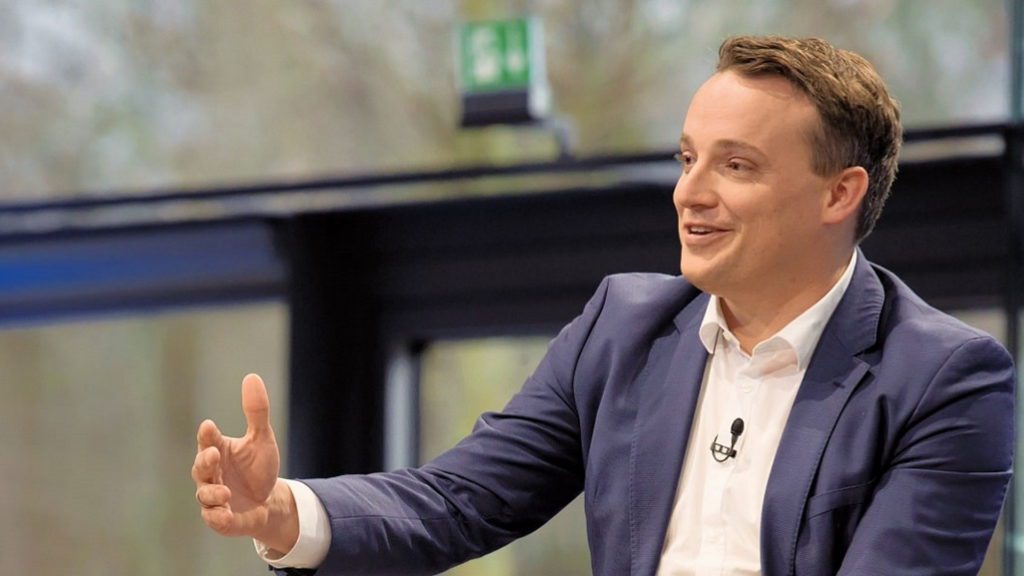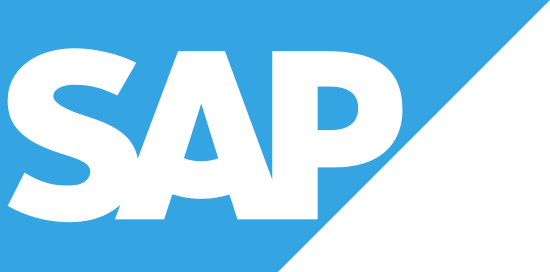
Since taking over as sole CEO of SAP three years ago, Christian Klein has presided over a corporate transformation that should be a primary business-school case study for the next decade.
Klein has driven a major overhaul from a product-led organization to one now focused rigorously on customer success; from an on-premises powerhouse moving cautiously to the cloud into an unapologetic and high-growth cloud-first innovator; and from a company whose projects used to be measured in multiple years to one that now triggers go-lives in months or even weeks.
Before getting to the excellent interview I had with Klein last week, I feel it’s important to flesh out SAP’s remarkable transformation with a few details that reflect how SAP’s focus on successful customer transformations has forced it to undergo some profound change internally as well.
- In April of 2020, during Klein’s first earnings call as CEO, the pandemic had rocked the global economy so severely that SAP could not offer any guidance on future revenue. Today, less than three years later, Klein has just guided SAP to full-year cloud growth of 22% to 25% in constant currency, which equates to about 30% without accounting for FX.
- Cloud revenue, which grew 33% in Q4, now accounts for 40% of SAP’s total revenue.
- SAP’s unmatched Rise “business transformation as a service” program was created two years ago by Klein and his team and has now become “the heart of our strategy” and “one of the most successful offerings ever” in SAP’s storied 50-year history.
- And — those of you who are skeptical or even cynical about this new SAP might want to sit down for this one — SAP is now the world’s second-fastest-growing major cloud provider.
In the interview with Klein for this final episode in the Cloud Wars CEO Outlook 2023 series (you can view the full-length video interview here), I asked him to reflect a bit on his impressions of those three tumultuous years in leading a company that, while made famous for helping other companies change, was itself suddenly in urgent need of an overhaul.
Klein of course mentioned the war in Ukraine, the surge in energy prices, the pandemic and the extensive upheaval it triggered, and inflation and the massive impact those had individually and in aggregate on how consumer behavior and, correspondingly, on how businesses needed to adapt.
“Look, when we started this journey and launched a new strategy and began the transformation of SAP, it was not only about moving to the cloud but also really about helping companies to transform,” Klein said.
“We have come a long way. You saw our accelerated cloud momentum, and this is even more important: the relevance of our portfolio in tackling the most pressing needs of our customers.
“Of course, it also involved changing the mindset and the culture of SAP toward focusing on adoption and customer success. So we came a long way and I’m very happy about where we are right now.”
And a bit later in the conversation, Klein offered a perfect example of how that “relevance of our portfolio” is playing out in a massive new deal with BMW and is indicative of a rising desire among business customers for seamless end-to-end capabilities that allow them to more rapidly, more intelligently, and more successfully.
The BMW engagement is fascinating on various levels, and Klein called it “one of the largest Rise deals we’ve ever done.” The re-imagination magic with BMW comes about because it not only involves a single company looking to make a huge leap in digitalization, automation, and customer experience, but also includes the entire global auto-industry value chain in concert with BMW.
Klein recalled a seminal conversation with BMW CEO Oliver Zipse, whose company has worked closely with SAP for many years.
“He said, ‘Christian, we already have a fantastic partnership, but we can really move it to the next level,'” a proposed move that would require SAP to behave in new ways with everything revolving around the customer and its extended network of suppliers, partners, and other stakeholders.
“So Oliver said, ‘It’s a global automotive network, and you are managing our material flow, but you’re also managing the one for Bosch, the one for Siemens, and you’re managing the one for our raw-material providers in Latin America, and they’re all wanting SCP. So Christian, let’s set this up and get all of these CEOs together and bring them together in this network.'”
As Zipse and Klein pursued the idea, the scope of the end-to-end opportunity for the customer became clear — but that big stretch was possible only because SAP had all of the products and capabilities to match Zipse’s vision.
Again, here’s Klein relating what BMW CEO Zipse was describing.
“He said supply chains are even more important than ever, and they need to become more resilient.
“The second part of that was, ‘Help me on automating my manufacturing space.’ And okay, so we have a great partnership with Siemens, where we build a vertical integration into shop-floor automation with predictive maintenance for the equipment,” Klein said.
“Then we help automate a lot of activities around logistics and warehousing, and then we talked about how that all goes down and connects to finance and how they’re all in on our analytics.
“And that lets us connect the financial planning with the HR planning with the procurement planning with the supply chain planning because you should not plan in isolation — it should be a sound plan to make the right decisions and course-correct in times like that.”
With SAP’s fast-growing Business Technology Platform (Q4 revenue up more than 50%) tying all those pieces together, Klein said, BMW was able to “bet on SAP end to end.”
Those end-to-end deals were out of SAP’s reach until Klein launched the big cloud-first transformation because SAP’s cloud portfolio was not complete enough to meet all those big-vision requirements from customers.
Today, Klein said, that’s no longer the case — so when CEOs of big customers share their big visions for fixing what’s currently broken and also building for future growth, SAP’s able to deliver a full range of cloud solutions spanning transformation, automation, supply chains, and sustainability.
“First, especially in times like this with inflationary pressure in this macroeconomic environment, CEOs want to continue with their transformation. That means if you’re a utilities company, we talk about the clean energy transition, we are talking about how can we change the operating model upstream and downstream.
“It’s the same for oil and gas companies, and we see the continuation of the transformation in the automotive industry where they actually also want to deliver everything-as-a-service,” Klein said.
In the booming field of process automation, “A lot of tech companies talk about that but for us, it’s very important to go into the business processes together with the business and analyze them and say, ‘Hey, where are a lot of manual activities sitting? How can we standardize? How can we automate with AI, and not only coding AI, but embed it into our offerings so that customers can consume it out of the box?”
Simultaneously, supply chains continue to be a top priority for CEOs across every industry.
“Just this morning I had a chemical company here from Germany and they said, ‘Christian, my number one concern is about my supply chain. Because when I want to sustain my growth in the United States but other regions are slowing, I need to have a resilient supply chain. I see SAP organizing this material flow, and I heard about the SAP Business Network with just millions of suppliers, many in the chemical industry. So help us to connect and give us this transparency and to minimize the supply-chain disruptions.’ “
The other top priority among SAP’s customers and prospects, Klein said, is sustainability. For SAP, that means helping businesses infuse sustainability data directly with financial and operational data, rather than segregating it out on the fringes as some sort of special project lacking strategic gravitas.
“Our role has to be that we are embedding ESG data in our core product so that we are not talking about averages and estimates,” Klein said.
“We want to aggregate a green ledger. I mean, 50 years ago, we started with the financial ledger and it took some time to become a standard. And now we set a standard” for sustainability.
The New SAP: Months and Weeks, Not Years
So while all of the changes outlined above — in the company culture now centered on customer success, in the cloud-first product portfolio, and in the broader vision to tie together entire industry value chains — have been essential for SAP, one more component was required in the transformation led by Klein: speed.
In the past, SAP’s customers were almost exclusively large global corporations and big mid-market companies. But today, Klein said, 80% of SAP’s customers are now small and medium-sized enterprises, a breakthrough that’s been driven by the company’s new cloud capabilities. And while, in that bygone era, major corporations were willing to tolerate projects that took years to complete, the expected timetable today is wildly different for both large businesses but in particular for smaller ones.
“They need go-lives in weeks,” Klein said, which is particularly true as more of SAP’s customers become creators of their own applications.
“We have SAP Build, announced last year at TechEd, where we actually also want to enable our customers and their citizen developers to really create new applications on the fly, and make sure they have also the agility and the platform,” he said.
“So the extensibility layer of our platform is extremely important.”
Final Thought
Not so long ago, the notion that SAP would be an eager proponent for customers creating their own apps on the SAP platform would have seemed laughable.
But it is fair to say that the SAP Klein has fashioned for 2023 and beyond is remarkably different than the company that created the enterprise-applications category 50 years ago and has led it for that entire half-century. And, not to repeat myself, but don’t forget: The same company that a few years ago could not offer any guidance on future revenue is now the second-fastest-growing major cloud provider in the world.
The full-length CEO Outlook version of this interview is available exclusively to Acceleration Economy subscribers. Sign up here for the CEO Outlook Digital Summit to start your free subscription and see all of the Cloud Wars Top 10 CEO Outlook interviews that will air on February 8, 2023, or upgrade to Premium and get your all-access pass to our entire practitioner analyst library of content.









